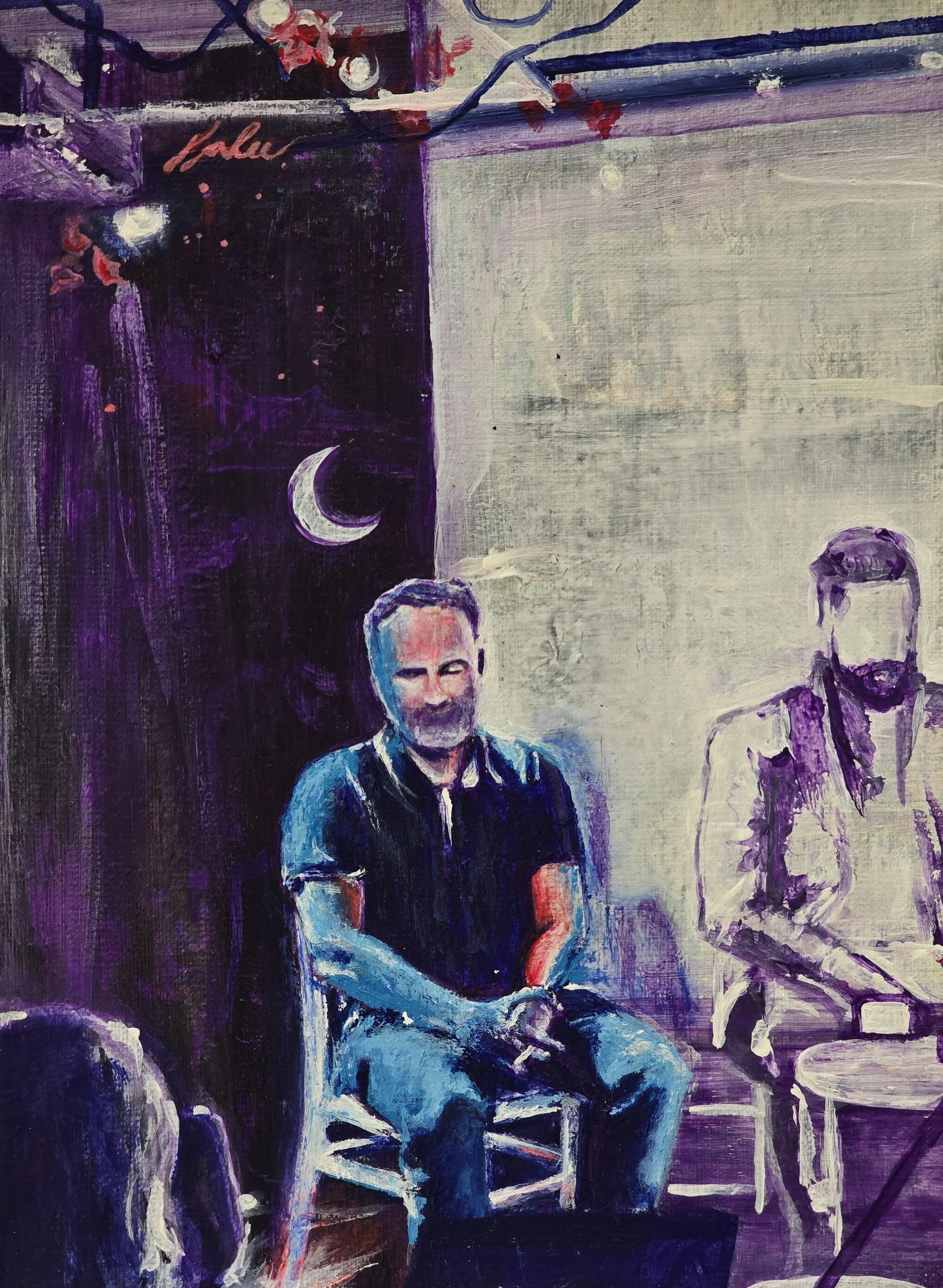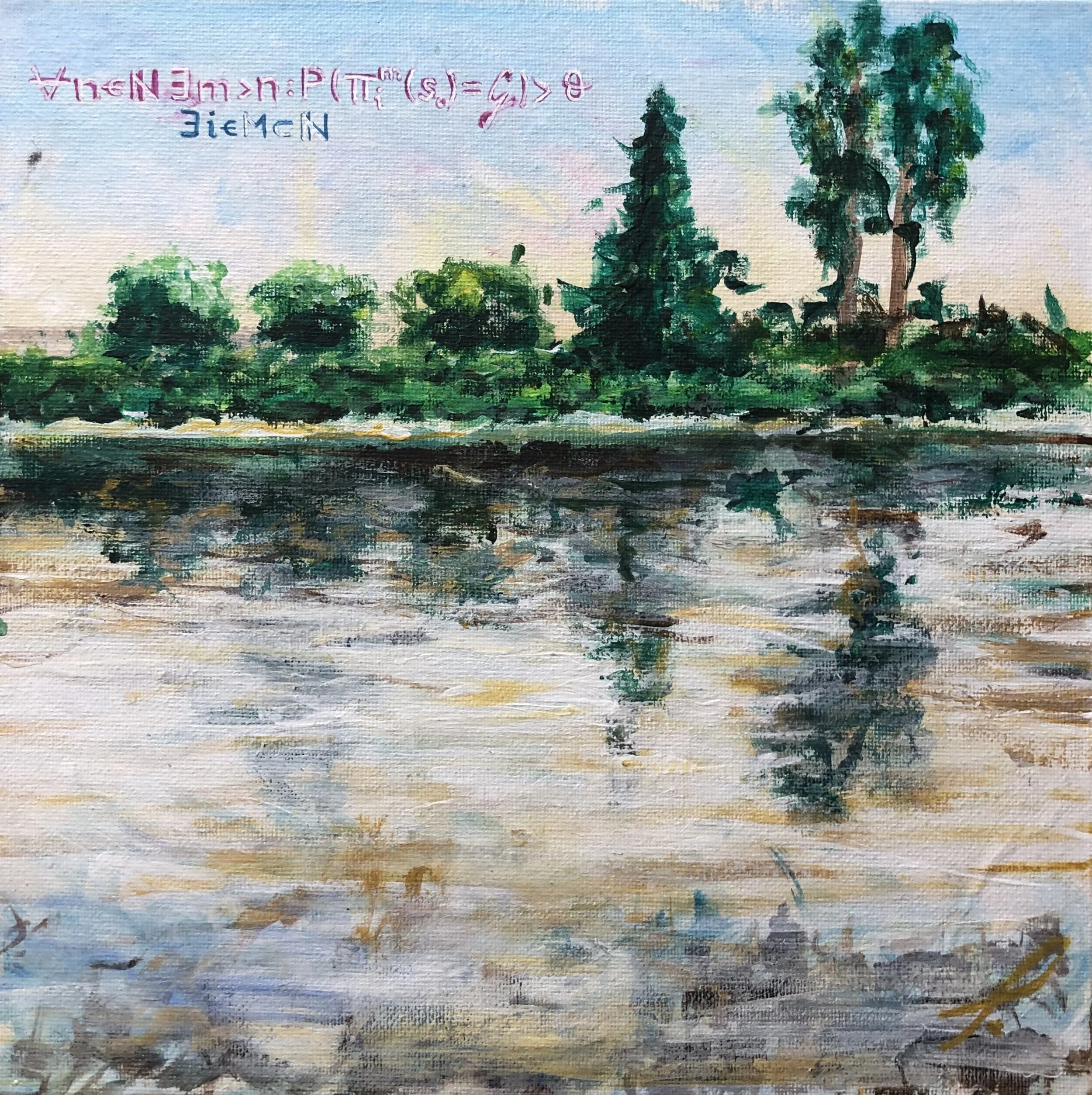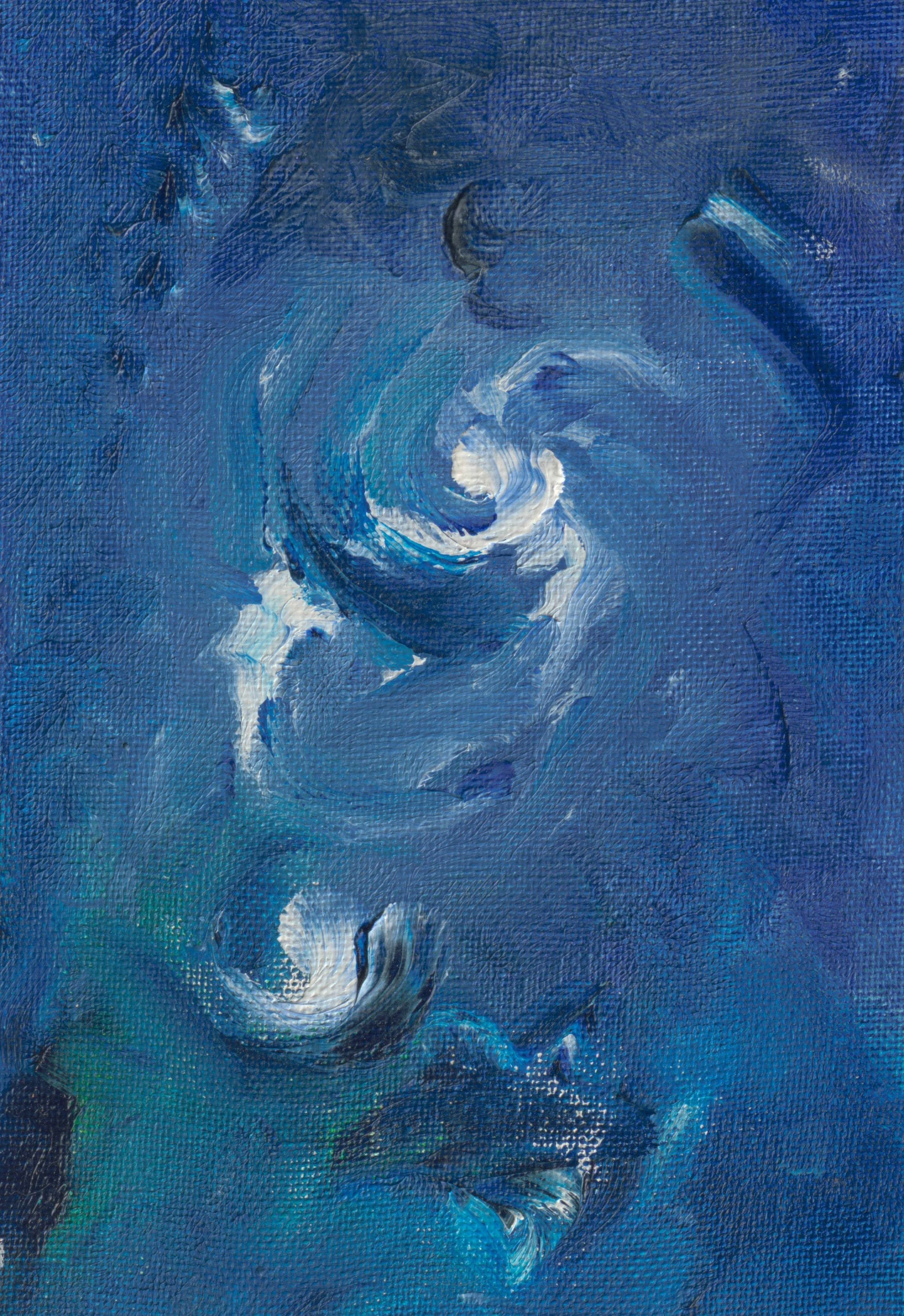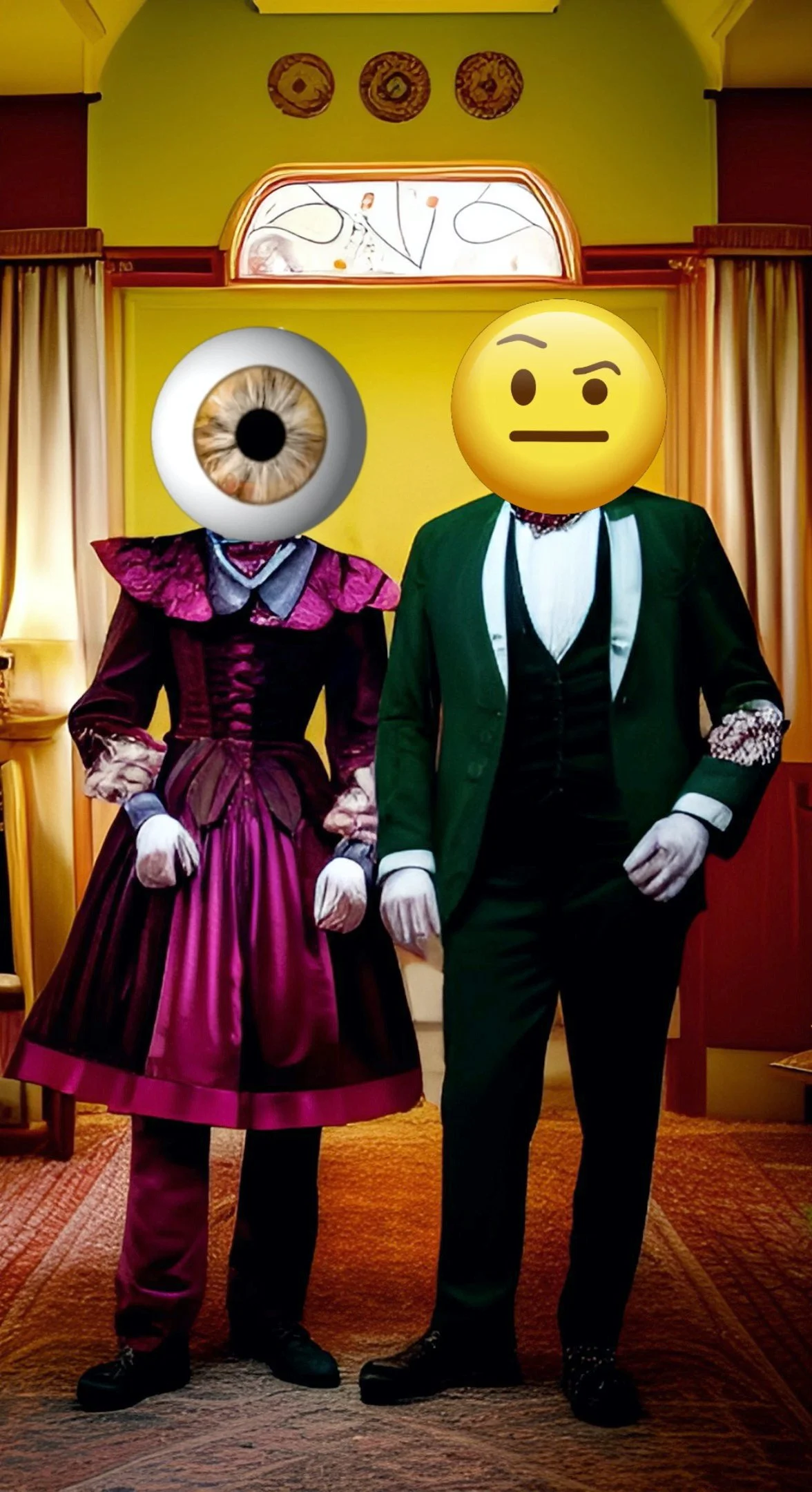Alexandra Dyalee
In the contemporary art scene, where the fusion of disparate disciplines has become a norm yet often lacks depth, Alexandra Dyalee emerges as a singular figure, bridging the gap between mathematical formalism and emotive human expression. This ambitious and talented artist intertwines the rational language of mathematics with the ephemeral and fragile nature of human relationships, producing a body of work that is as intellectually provocative as it is emotionally resonant. Her creations stand as rare confluences of art, science, and personal philosophy, carved from her unique background as a mathematician, artist, and champion triathlete.
Dyalee’s oeuvre is characterized by a distinct and original visual language that speaks to her eclectic life experience and multifaceted identity. Her artworks are not merely aesthetic compositions but narratives rooted in her pursuit of harmony, or "concordia." This concept of harmony, central to her artistic philosophy, is evident in her intricate compositions where mathematical equations flow seamlessly alongside symbolic representations of human emotions. Each piece is a testament to her ability to distill complex scientific ideas into visual metaphors that reveal hidden symmetries between the realms of logic and feeling.
Her work resonates with echoes of artists like Marcel Duchamp, who, in his time, also explored the intersections of art and mathematics. But while Duchamp’s approach was rooted in irony and critique, Dyalee’s style is infused with an earnest search for connection and understanding. Her fusion of mathematical constructs with deeply personal themes places her in the lineage of artists such as M.C. Escher, who sought to visualize the abstract principles underlying the physical world. Yet, Dyalee goes beyond formal aesthetics, infusing her mathematical symbols with warmth and humanity, aiming to capture the elusive qualities of human relationships.
In her artist statement, Dyalee reveals her struggle and ultimate resolution with the competing demands of her passions: mathematics, art, and sports. Her choice of the Latin term "concordia" to describe her mission suggests a deep-seated belief in the unity of these fields, each complementing and enhancing the other. Through her work, Dyalee invites the viewer to experience this "concordia" for themselves, proposing that the rational and the emotional, the calculated and the intuitive, are not separate realms but interconnected expressions of the human experience.
Her personal narrative, particularly her journey as a young artist who found solace in painting as a means of communication, adds an additional layer of significance to her work. Diagnosed with Asperger syndrome, Dyalee articulates how art became her most natural language—a medium through which she could convey her feelings in ways that words could not. This lends her paintings an authenticity and vulnerability that is palpable, inviting the viewer into a deeply personal space where they can sense the artist’s yearning for connection and understanding.
One of Dyalee’s most compelling innovations is her portrayal of mathematics as an emotional language. In works like "Numeri Nexum (The Love Formula)," she explores the possibility that relationships can be understood through mathematical structures. This notion—that there exists a "mathematics of relationships"—is a provocative concept that challenges the viewer to reconsider the conventional divide between the logical and the emotional. Through her art, Dyalee suggests that even something as abstract as mathematical theory can be a mirror of human experiences, capable of expressing intimacy, longing, and vulnerability.
"Numeri Nexum" (The Love Formula) and "Tibi Credo" (I Trust You), embodies a fusion of intellectual rigor with emotional depth, reflecting her dual background in mathematics and visual arts. Dyalee’s paintings harness the abstract conceptual framework of mathematics and blend it with the sensorial richness of the acrylic medium, creating a dialogue between rationality and intuition that invites viewers to traverse a layered perceptual journey.
In "Numeri Nexum," Dyalee translates the abstract notion of love into geometric and numerical symbolism, underpinned by a robust chromatic structure that acts both as a visual anchor and a dynamic narrative device. This work exemplifies how Dyalee’s academic grounding informs her artistic vision, embedding complex ideas within accessible emotional landscapes.
"Tibi Credo" juxtaposes stark simplicity with a depth of field, using minimalistic composition to evoke a sense of trust through spatial relationships on the canvas. This piece, like many of her works, showcases Dyalee's adept use of color and form to articulate profound human experiences and beliefs.
Her series, which includes "In Via" (The Pathway) and "Lumen Cordis" (Light of My Heart), further explores these intersections of the cognitive and the emotive. "In Via" serves as a metaphorical exploration of life's journey, rendered in subtle hues and delicate strokes that suggest a path both ephemeral and enduring. "Lumen Cordis," on the other hand, illuminates the spiritual and emotional core of her thematic concerns, using light as a symbol of inner radiance and strength.
Dyalee’s engagement with complex emotional themes is particularly poignant in "Childhood OCD," where the disorder's invasive and controlling nature is depicted with an intensity that borders on the claustrophobic, yet handled with the empathy and insight of someone intimately familiar with its impact.
Works like "Sit" and "Passion" display her versatility, with the former encapsulating a moment of quiet introspection through a large-scale portrayal that commands the viewer's attention, and the latter condensing intense emotion into a compact canvas, reflecting the explosive and transient nature of passion itself.
Her piece "Teaflower, the Forest Fairy" and "Hemispheres" demonstrate her enchantment with nature and the human mind, respectively. "Teaflower" is imbued with whimsical elements that transport the viewer to a fantastical realm, while "Hemispheres" uses the brain’s anatomy to delve into themes of cognitive processes and dualistic nature of human perception.
Alexandra Dyalee’s art is a profound commentary on the human condition, bridging the gap between the analytical and the emotional, the scientific and the personal. Each piece serves as a node in a larger network of thematic and aesthetic inquiry, positioning her as a pivotal figure in contemporary art discourse. Her recognition with awards like the International Prize MICHELANGELO and PEGASUS for the Arts is a testament to her unique ability to synthesize diverse realms of human knowledge and experience into compelling visual forms.
Her use of mathematical symbols and formulas is not a cold exercise in formalism but rather a personal language that reflects her inner emotional landscape. By embedding these symbols within her work, Dyalee effectively "translates" her feelings into a language that is universal yet deeply intimate. This synthesis of logic and feeling is evident in her choice of color, composition, and texture, all of which work together to create a visual harmony that feels as precise as it is profound.
In an art world that often prizes novelty over substance, Dyalee’s work stands out for its depth and sincerity. Her unique blend of mathematics, personal narrative, and emotional exploration has garnered her recognition not only as an innovative artist but also as a vital voice within the community. Her contributions to exhibitions across Europe and the United States, as well as her collaborations, such as the "AUTISTS-ARTISTS" exhibition in Bratislava, position her as an advocate for the intersection of intellectual and emotional exploration in art.
Dyalee’s career trajectory suggests a growing recognition in the art market, as evidenced by her awards, including the prestigious International Prize MICHELANGELO and the International Prize PEGASUS for the Arts in 2023. These accolades underscore the significance of her work within the broader art community and hint at her potential to influence future trends. Her art is not only a reflection of her individual experience but also a commentary on the human condition, resonating with collectors and critics alike.
Dyalee’s work occupies an important place in contemporary society, particularly in its challenge to the often-dismissive attitudes toward mathematical and scientific disciplines within the art world. By foregrounding the beauty and emotional resonance of mathematics, she encourages viewers to see beyond stereotypes and engage with mathematics as a deeply human pursuit. This approach is not only refreshing but also essential in a world that increasingly values interdisciplinary understanding and collaboration.
Her work has the potential to foster a greater appreciation for neurodiversity and the unique perspectives that individuals with Asperger syndrome bring to the arts. Her collaboration on exhibitions that promote autism awareness highlights her commitment to social issues, making her art both a personal statement and a tool for social advocacy.
In blending art and mathematics, Dyalee is part of a lineage that includes historical figures like Leonardo da Vinci, who famously combined scientific inquiry with artistic expression. However, unlike da Vinci, whose work was largely focused on the natural sciences, Dyalee’s focus on abstract mathematics as a metaphor for human relationships marks a distinct evolution in this tradition. Her work shares affinities with that of more recent figures like Benoît Mandelbrot, whose explorations of fractals revealed hidden patterns in nature that echoed aesthetic principles. Yet, while Mandelbrot’s work was rooted in theoretical mathematics, Dyalee’s art is grounded in the emotional and relational, using mathematics to express the fluidity and complexity of human connection.
Alexandra Dyalee’s art is a testament to the power of interdisciplinary thinking, where mathematics becomes a vessel for expressing the inexpressible and art becomes a means of understanding complex scientific ideas. Her work is not merely about aesthetic enjoyment but serves as an intellectual and emotional exploration of the world, offering viewers a rare glimpse into the harmony she experiences in her pursuits. With each brushstroke, she captures not only her personal journey but also a universal longing for understanding and connection.
In Dyalee’s hands, mathematics ceases to be an abstract discipline and becomes a language of the heart, capable of conveying the subtleties of human emotion and the intricacies of interpersonal relationships. Her art invites us to see beauty in places we might have overlooked and to appreciate the delicate balance between logic and feeling that defines the human experience. As her career continues to flourish, Alexandra Dyalee is poised to leave an indelible mark on the art world, reminding us that true art transcends boundaries and speaks to the deepest parts of ourselves.
By Marta Puig
Editor Contemporary Art Curator Magazine
Tibi Credo [I Trust You], 2023. Acrylic on canvas, 60 x 30 cm.
In Via [The Pathway], 2021. Acrylic on canvas, 15 x 10 cm.
Lumen Cordis [Light of My Heart], 2019. Acrylic on canvas, 50 x 50 cm.
Childhood OCD, 2022. Oil on canvas, 20 x 50 cm.
Sit, 2023. Acrylic on canvas, 150 x 65 cm.
Passion, 2023. Acrylic on canvas, 10 x 15 cm.
Teaflower, the Forest Fairy, 2023. Acrylic on canvas, round canvas.
Hemispheres, 2023. Acrylic on canvas, 15 x 15 cm.
Mi... [Mine...], 2022. Oil on canvas, 10 x 15 cm.












